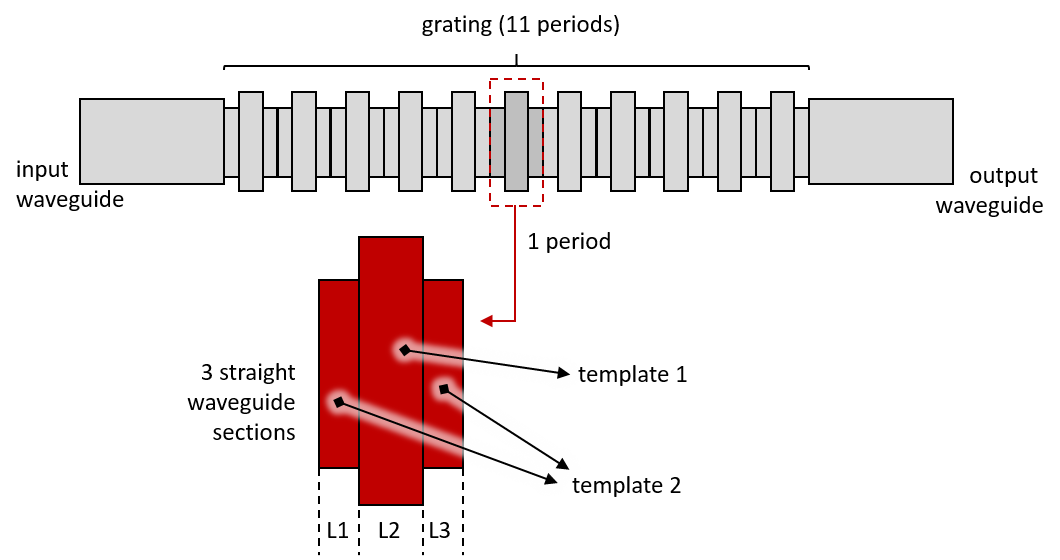Waveguide Gratings
Waveguide gratings are periodic perturbations of the waveguide. The perturbations cause backscattering, which can coherently build up into a strong reflection. In PICAZZO, waveguide gratings are constructed from period unit cells. These unit cells can be identical, for creating a uniform grating, or can be individually chosen, to make a nonuniform grating (e.g. an apodized or supersampled grating).

Example layout of a Waveguide Grating.
The two basic grating classes in PICAZZO are therefore:
Waveguide with inline, non-uniform grating. |
|
Waveguide with inline, uniform grating. |
The shape of the gratings is largely determined by the choice of Unit cells. For this, PICAZZO provides a number of customizable unit cells to create a variety of gratings. These range from very generic unit cells where you can specify each individual waveguide template, to specific, commonly used unit cells such as side gratings.

Examples of waveguide gratings with different unit cells
waveguide grating period consisting of concatenated waveguide sections. |
|
Period for a waveguide with modified parameters. |
|
Period for a waveguide with side gratings. |
|
Period for a RibWire waveguide with side gratings defined in the outer edge. |
|
Period for a waveguide with blocks on the side. |
|
Period for a waveguide with grooves etched in the core. |
Model details
In IPKISS, the basic model for the grating is based on the Fresnel reflection between consecutive waveguide sections. The Fresnel reflection is defined by the difference in effective index between two waveguide sections.
This simple model ignores possible stronger reflections due to mode mismatches and coupling through higher-order guided or radiative modes, but it does correctly include multiple reflections.